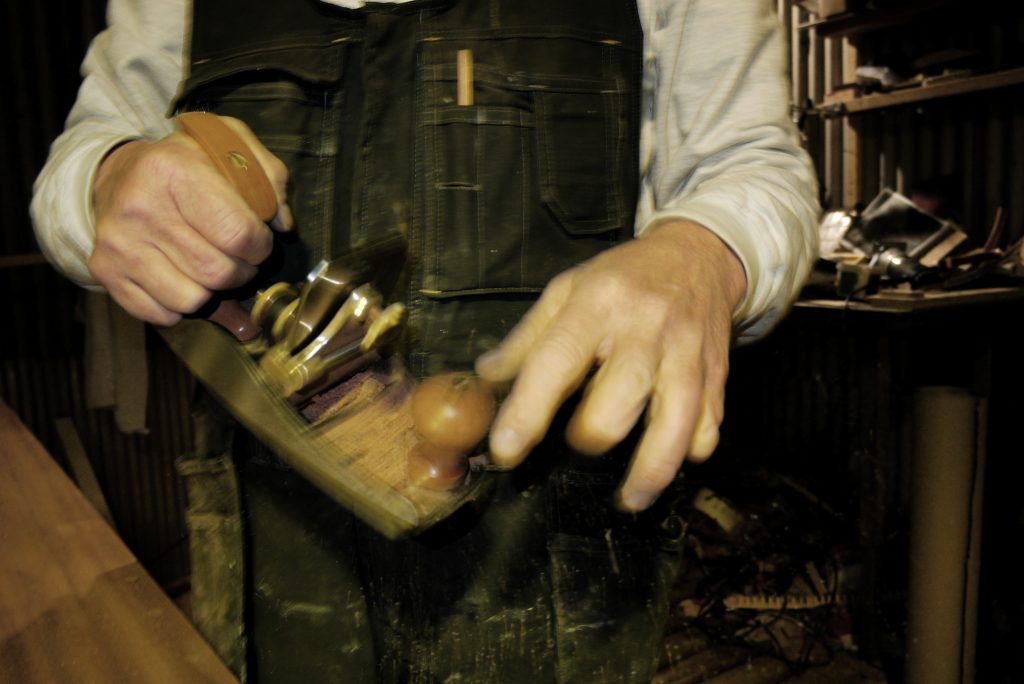Since the most recent post, the team has been working on the sheer line, the deck and some of the preparations for later installations, such as the rigging. The engine has also arrived. The internal hard points, perhaps we could call them chain plates, for the shrouds have been welded up and bolted to the frames. A metal load bearing beam has been bolted to the underside of the deck to keep the shroud positions athwart-ships. The cleats or noggins that run the full length of the deck planks …
Blog
Steamed Oak Ribs
September 2017 - Steamed Ribs Having sanded and oiled the inside of the hull planking, we now begin to prepare the oak to steam into shape. We collected the oak from a sawmill near Gothenburg called AB Werner Abrahamsson Trävaruaffär. Having driven it back to the shed in a trailer, we assessed the timber, marked up what lengths we could get and the best line to split the planks on. One straight cut allows us to rive more lengths from both sides, staying parallel with the grain. These …
A look back
Since migrating to our new website, we’ve collated the posts and information from the old site so we can present it on the new. This post is designed to bring the older images and events in to our current narrative. June 2015 – The salvage team, with the help of MTB Dyk, have discovered Ester at a depth of 60 metres. The vessel lies on the seabed waiting for the diver to prepare the lifting cradle. Video communication allows the team to observe events at the bottom. Strops are secured and …
Fairing, Stepping and Bracing
Since November 2017, Meb, Johannes and Bo have made some real progress in finishing the exterior of the hull, the interior bracing members, fitting an adjustable mast step and a few more coats of Woodskin, supplied by Tinter. It has snowed a lot and the world outside Ester is white and cold. This is our first post since Goosewing published this new site. Using a variety of longboard-type devices, the team have managed to fair about 95% of the exterior planking. They've used Mirka …
Lines drawing of Ester
Juliane Hempel has managed to fit Ester into her busy schedule. As well as supplying us with advice regarding the construction and rig, she has drawn us an up-to-date lines plan of Ester. This new drawing is based on the hull found on the seabed, rather than Mellgren’s drawing. We expect to find some differences between these two versions. Armed with this new drawing, we, or perhaps more rightly Juliane, is now able to do all of the complicated stuff that naval architects do. She will …
Fakverk
Fakverk, or truss construction "consists of two-force members only, where the members are organized so that the assemblage as a whole behaves as a single object"[1]. Ester was built with longitudinal bracing, we’ll call trusses, wedged between an upper and a lower stringer. We’ll call these the deck stringers and the bilge stringers. The trusses increase the strength of the hull vertically. The effect of this is that the rig tension and stresses of the waves do not bend the boat too much. It …





